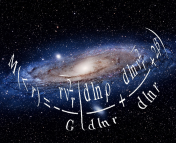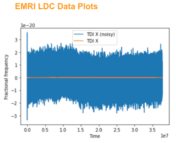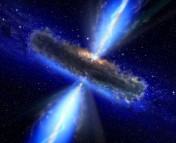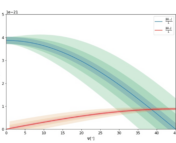The Undergraduate Research series is where we feature the research that you’re doing. If you are an undergraduate that took part in an REU or similar astro research project and would like to share this on Astrobites, please check out our submission page for more details. We would also love to hear about your more general research experience!
Shashwat Singh
Sardar Vallabhbhai National Institute of Technology
Today’s guest post was written by Shashwat Singh, an undergraduate at SVNIT Surat, India; along with Amitesh Singh and Ankul Prajapati. Initial work was presented at the ICGC conference as a poster held at IISER Mohali, India in 2019 and the pre-print of the paper is available on the arxiv and published in MNRAS.
Gravitational waves (GWs), which are a solution to Einstein’s theory of general relativity, are ripples in the fabric of spacetime that carry energy across space and emanate from astrophysical sources involving extreme masses, such as the merger of two black holes. The energy given off by these masses is large enough to perturb spacetime. Such perturbations can be observed and recorded by interferometers such as LIGO and Virgo, which generate signals corresponding to the same disturbances in spacetime. LIGO has an arm length as long as 2.5 miles (~4 km) and has two stations in the US. The Virgo interferometer, LIGO’s Italian counterpart, has arm lengths of 1.8 miles (~2.9 km). In contrast, the upcoming space-based interferometer LISA (the Laser Interferometer Space Antenna) will have an arm length of over 3,000,000 miles (~5,000,000 km)! The signals from astrophysical events are usually mixed with noise. This noise comes from many sources: ocean waves, human activities like traffic, and even from the detector itself in the form of small variations in the laser intensity and frequency.
In this project, we used a filtering method for end-to-end time-series signal processing in order to pick out the signals from this noise. This method is employed for classification and regression, and specifically for the detection of GW signals in noisy time-series data streams collected by the LIGO-Virgo interferometers (see full workflow below). The results are fed into an artificial neural network (ANN) model and are trained for predicting any astrophysical events and their corresponding features. The data used for training the model include O2 4 KHz (detectors placed at Hanford, Livingston and Louisiana) datasets out of which 20% of the testing datasets were used for testing the model. The model showed an accuracy of 92% with validation accuracy of 91.6% on experimenting with various model parameters.

Astrobite edited by: Haley Wahl




